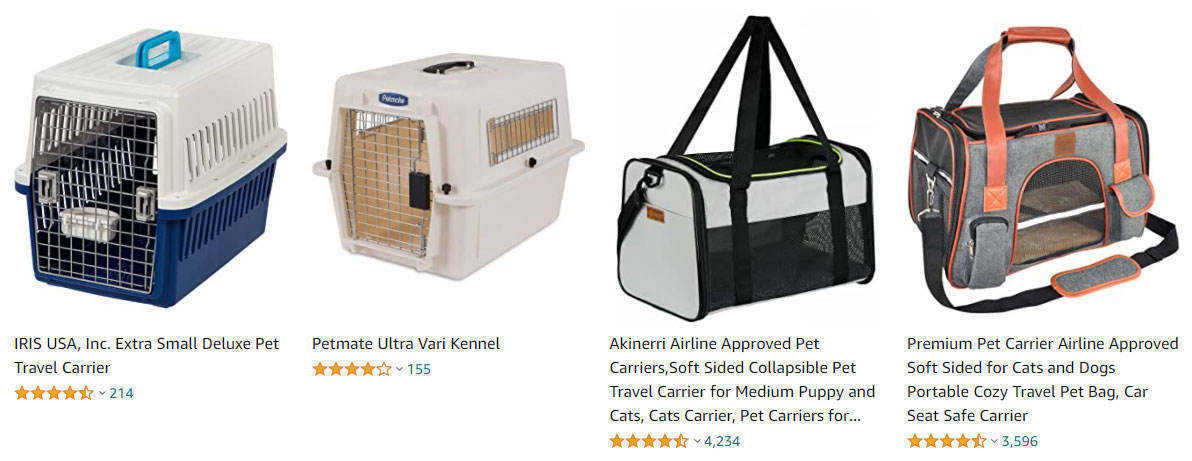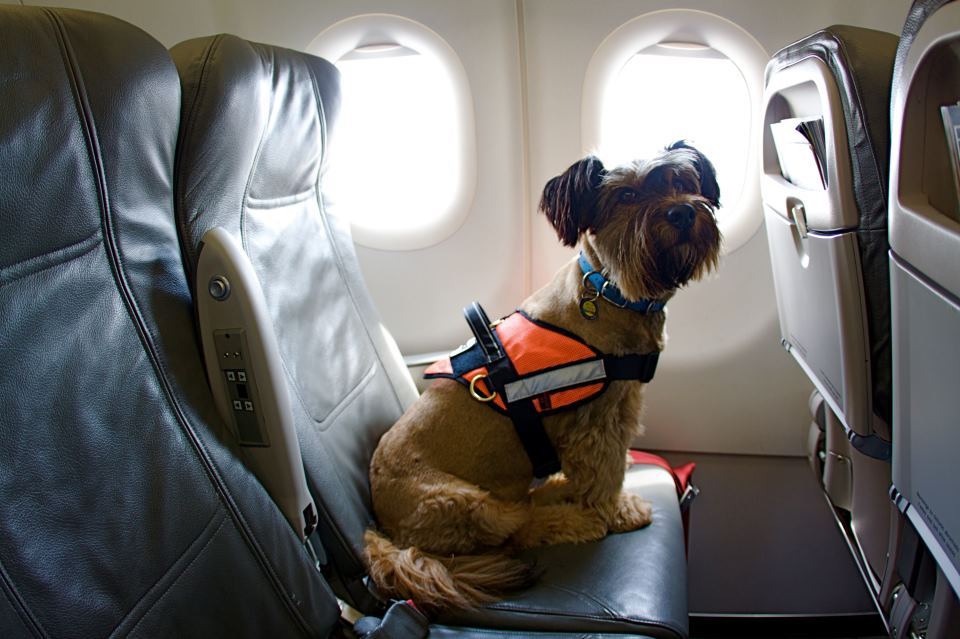Travel with a dog on a plane
Traveling by plane with your dog can be a stressful ordeal... For your dog and for you!
If your dog weighs more than 6 kg on average, he'll have to travel in the hold while you'll be left in the cabin, racking your brains trying to figure out how his journey will go.
To prevent you from worrying too much, we'll explain in detail how your dog travels by plane and how to best prepare him for it!
Travelling by plane with your dog: reminder of the regulations
The regulations governing the transportation of dogs on airplanes can vary from one airline to another, so I recommend that you contact your airline to find out about them before you book your tickets.
Some airlines do not accept short-nosed dogs, and others simply refuse all animal species.
So before you book your flight, make sure your dog meets all the age, weight and morphology requirements of the airline you are considering.
Take advantage of this opportunity to find out about administrative and health formalities: some companies require a certificate of good health to accept a dog on board.
Finally, make sure that the company of your choice complies with IATA standards.
The IATA (International Air Transport Association) standards were established by the association of the same name to guarantee the well-being of animals travelling by plane.
Not all airlines are IATA approved, but most airlines operating international flights are.
You can consult the list of IATA member airlines here: https://www.iata.org/about/members/Pages/airline-list.aspx?All=true.
In order for your dog to be allowed to travel on an airplane, his crate must meet various requirements set forth by the IATA and designed to ensure his safety:
• The dog must be able to stand, turn around and lie down in the crate without discomfort
• The crate must be rigid (fiberglass or plastic) and its two parts must be maintained by bolts
• The box must be closed centrally and the hinges must extend at least 1.6 cm towards the top and bottom
• If necessary, the wheels must be blocked
You can find IATA approved crates in pet shops, on the internet and in many airports.
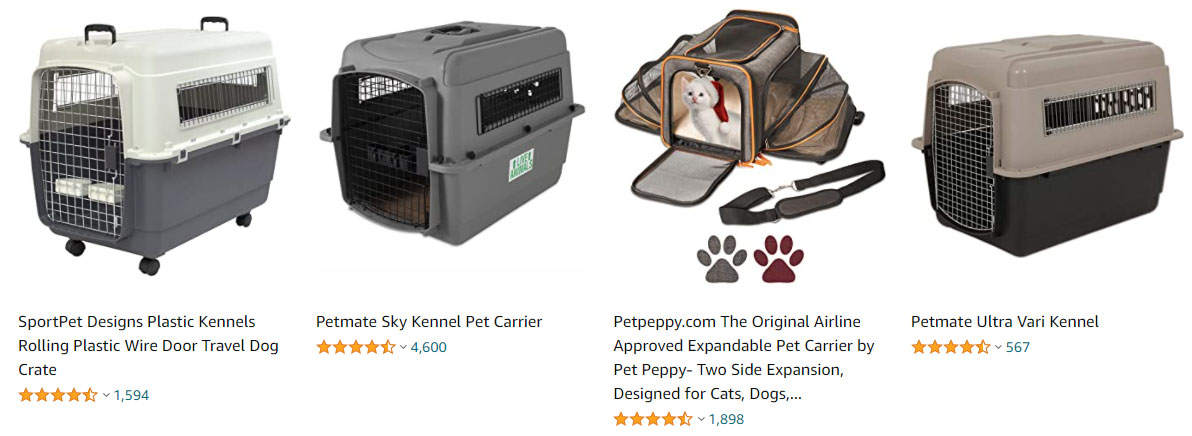
Also note that some airlines rent their IATA crates, which can save you an unnecessary investment, especially if your dog does not fly every morning!
The preparation of your dog before his trip by plane also includes a visit to the veterinarian.
The veterinarian will be able to advise you on possible sedatives to help your dog overcome his stress and will make sure that your pet's vaccinations are up to date.
To find out what vaccinations your dog needs before leaving, visit the website of the embassy of your destination country.
Some countries also require quarantine for dogs arriving by air, and others require a certificate of good health, parasite treatment and/or an import permit.
From airport to airport, your dog's journey in detail
Before the airport, prepare your dog's crate well. To ensure that your dog's plane trip goes smoothly, it is important to get him/her used to the crate as soon as possible.
Try to get an IATA crate at least 10 days before your departure to familiarize your dog with his new environment.
Put cushions and blankets in the crate to make it a comfortable place where your dog will feel safe.
If your dog is reluctant to enter the crate, you can encourage him by placing treats or his favorite toys in the crate.
The next step is to prepare the crate for the big day to make sure your dog has everything it needs during transport.
I recommend placing an absorbent material on the floor, and hanging an empty container on the bars of the door.
This will allow the airport staff to give your dog something to drink if there is a long wait before and after the flight, or during stopovers.
You can also attach a bag of food to the outside of the crate so your dog can be fed at the same time.
I also recommend placing one of your dog's favorite accessories in the crate to reassure him.
Finally, don't lock the crate: flight attendants and airport agents must have access to your dog in case of emergency.
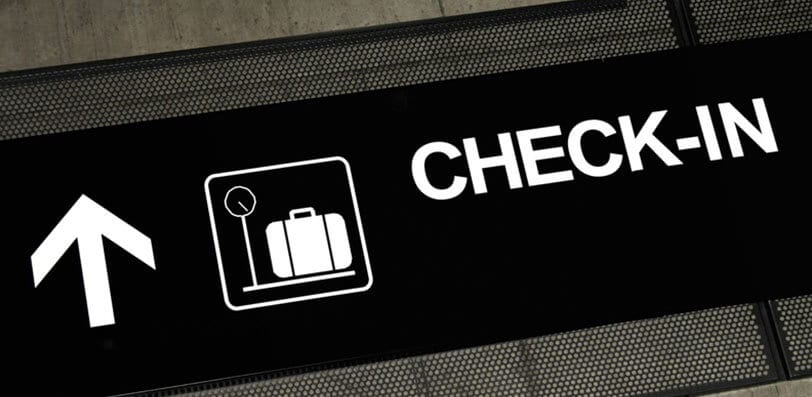
Airport of departure: check your dog in
Once your dog is ready to take off, check in 30 minutes before the scheduled time, or at least 90 minutes before your departure time.
Dogs traveling in the hold must be checked in at the "non-standard" baggage counter, either before or after you check in.
During this step, your dog is weighed and tags are applied to the crate to facilitate identification.
If required by the company, your pet's health certificate is checked at this stage, as well as its European passport (for travel to the EU).
Once this is done, your dog is taken care of by the airport staff. You will be reunited with your pet upon arrival!
The flight: how does your dog travel?
Once your pet has been taken from you by airport staff, he is placed in storage with the luggage until it is time to load.
If the wait is long, the agents may feed and water him, although they are under no obligation to provide food for your pet during transit.
For his comfort, it is therefore crucial to have properly prepared his crate beforehand to facilitate the agents' task.
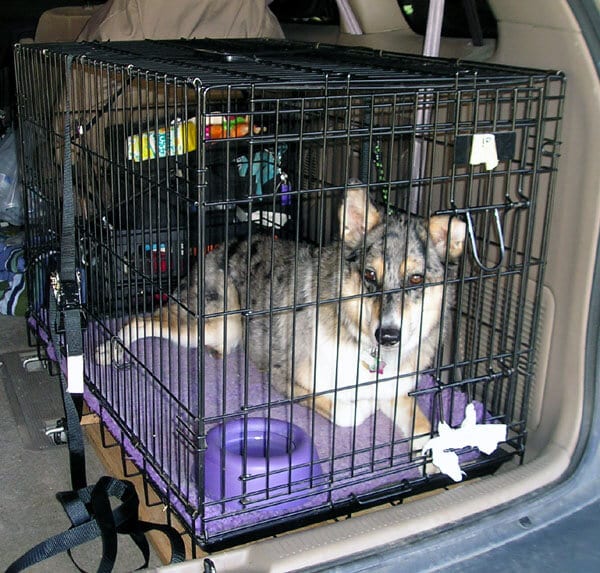
I also recommend that you write your dog's name on his crate so that the staff can call him to comfort him.
Your dog is then placed in a separate compartment in the hold, which is heated and pressurized during the flight.
Please note that most airlines only air-condition their cargo compartments when transporting animals, so it is important to check your dog in well in advance!
Despite the heating, the temperature in the hold is often very low, so I suggest you put a good blanket in Medor's crate.
Airport of arrival: retrieving your dog
As with your departure, your dog will usually arrive at the "non-standard" baggage claim, although smaller airports sometimes place pets next to regular baggage.
You will then have to go through customs with your dog, during which time his passport and vaccinations will be checked.
In some countries (such as Canada), there is a fee for this procedure and you will have to pay the fees on the spot.
If you are in compliance with the health and administrative standards of your destination country, this step will go smoothly and quickly.
However, if there are any irregularities, your pet may be placed in quarantine or, in the worst case, euthanized.
It is therefore crucial to be well informed about the formalities of your country of residence so as not to put your pet in danger.
For example, in France, your dog must be identified, vaccinated against rabies and accompanied by an anti-rabies serum titration of more than three months to pass through customs.
To land in Canada, it must simply be vaccinated against rabies without the need for titration or identification.
As for the islands, they generally impose more drastic controls when animals arrive on their territories.
New Zealand, Australia and New Caledonia require, among other things, a 10-day quarantine and an import permit for each dog that arrives at their borders.
To minimize stress for you and your dog, it is crucial to prepare your pet for the flight in advance, especially if you are not yet familiar with the regulations imposed by your destination country.
In addition to the administrative and sanitary formalities involved in importing animals into a territory, you will also need to ensure that your pet travels in good conditions - at least those imposed by the IATA standards.
